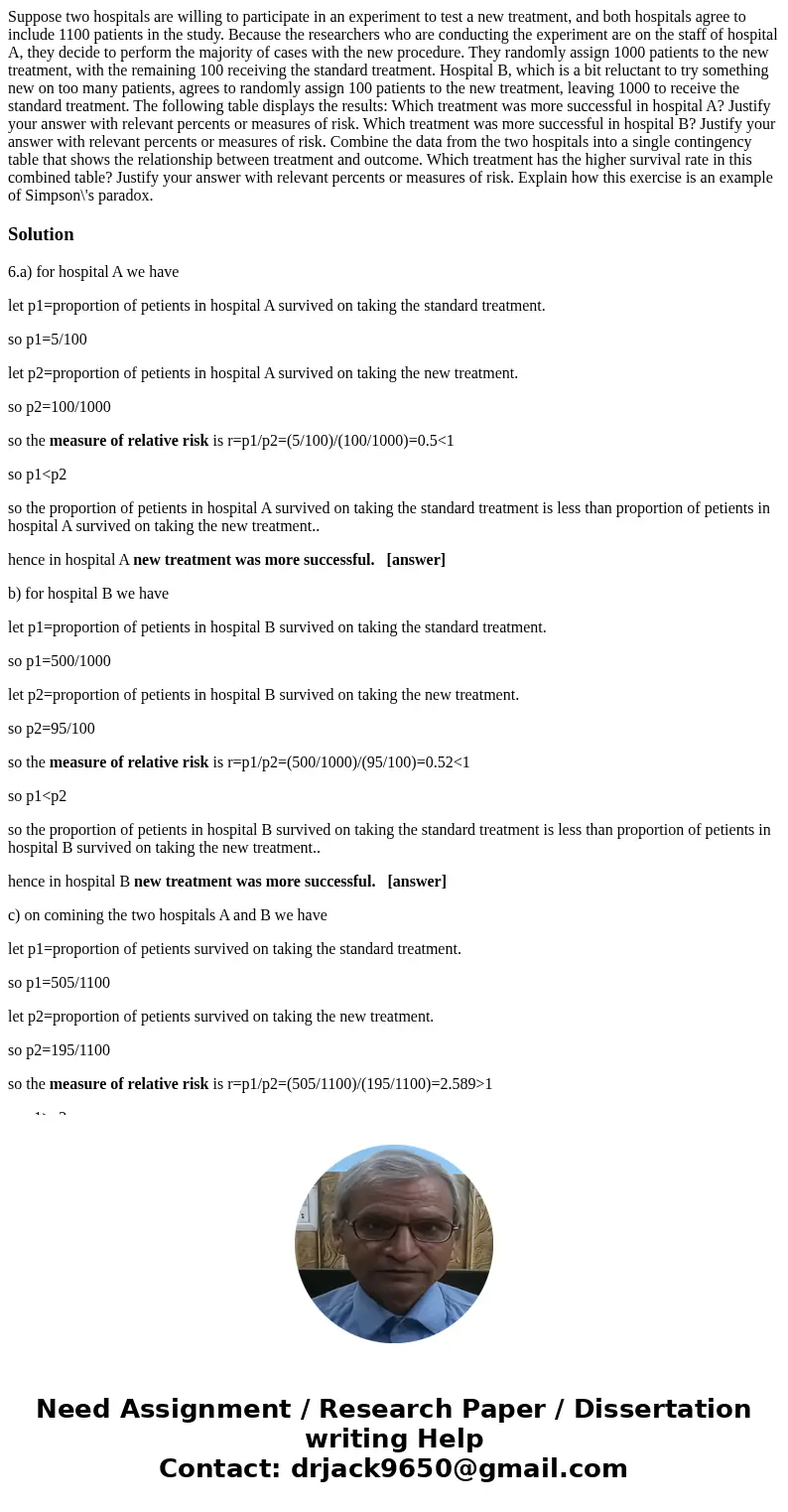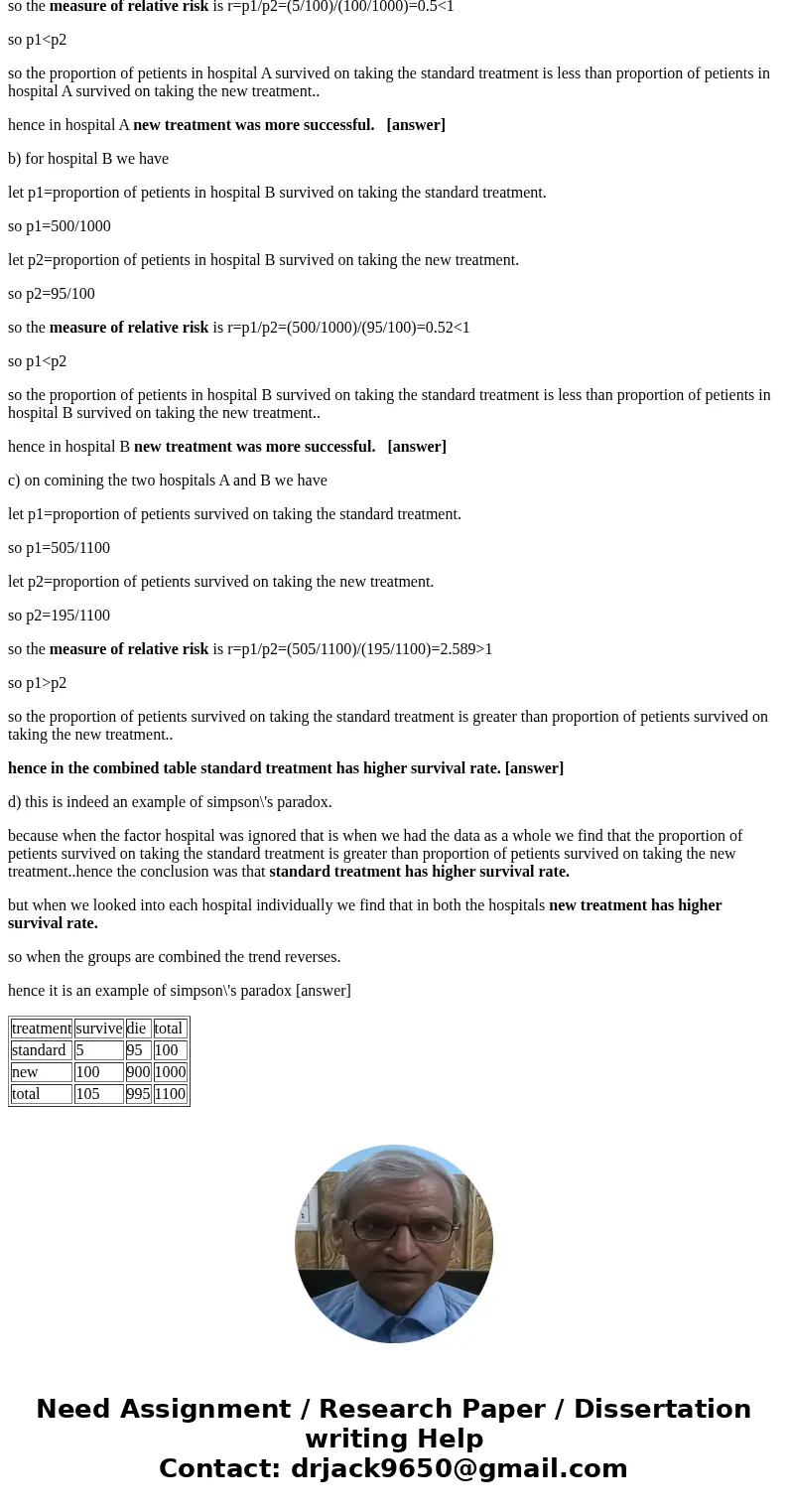Suppose two hospitals are willing to participate in an exper
Solution
6.a) for hospital A we have
let p1=proportion of petients in hospital A survived on taking the standard treatment.
so p1=5/100
let p2=proportion of petients in hospital A survived on taking the new treatment.
so p2=100/1000
so the measure of relative risk is r=p1/p2=(5/100)/(100/1000)=0.5<1
so p1<p2
so the proportion of petients in hospital A survived on taking the standard treatment is less than proportion of petients in hospital A survived on taking the new treatment..
hence in hospital A new treatment was more successful. [answer]
b) for hospital B we have
let p1=proportion of petients in hospital B survived on taking the standard treatment.
so p1=500/1000
let p2=proportion of petients in hospital B survived on taking the new treatment.
so p2=95/100
so the measure of relative risk is r=p1/p2=(500/1000)/(95/100)=0.52<1
so p1<p2
so the proportion of petients in hospital B survived on taking the standard treatment is less than proportion of petients in hospital B survived on taking the new treatment..
hence in hospital B new treatment was more successful. [answer]
c) on comining the two hospitals A and B we have
let p1=proportion of petients survived on taking the standard treatment.
so p1=505/1100
let p2=proportion of petients survived on taking the new treatment.
so p2=195/1100
so the measure of relative risk is r=p1/p2=(505/1100)/(195/1100)=2.589>1
so p1>p2
so the proportion of petients survived on taking the standard treatment is greater than proportion of petients survived on taking the new treatment..
hence in the combined table standard treatment has higher survival rate. [answer]
d) this is indeed an example of simpson\'s paradox.
because when the factor hospital was ignored that is when we had the data as a whole we find that the proportion of petients survived on taking the standard treatment is greater than proportion of petients survived on taking the new treatment..hence the conclusion was that standard treatment has higher survival rate.
but when we looked into each hospital individually we find that in both the hospitals new treatment has higher survival rate.
so when the groups are combined the trend reverses.
hence it is an example of simpson\'s paradox [answer]
| treatment | survive | die | total |
| standard | 5 | 95 | 100 |
| new | 100 | 900 | 1000 |
| total | 105 | 995 | 1100 |


 Homework Sourse
Homework Sourse